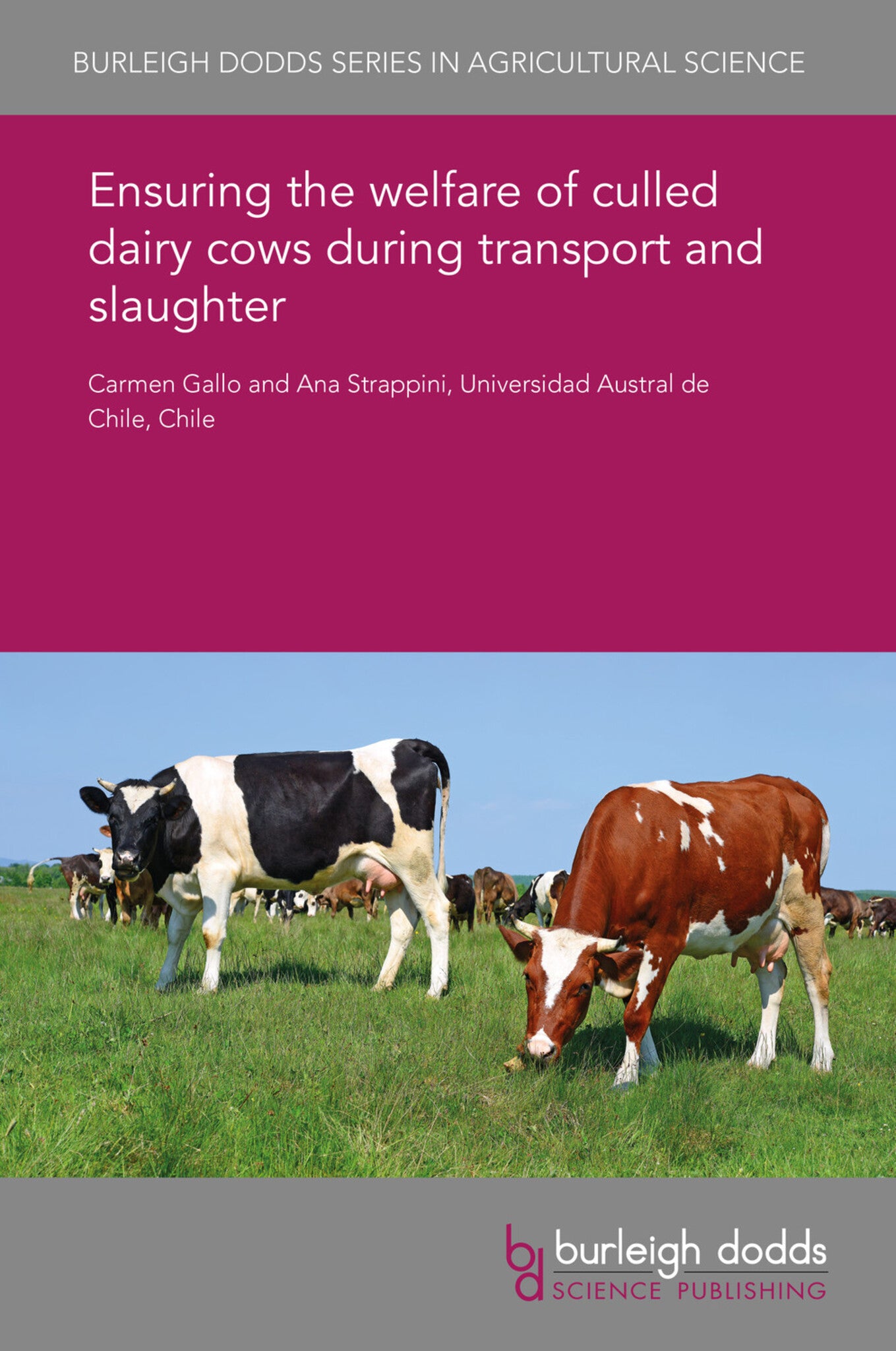We're sorry. An error has occurred
Please cancel or retry.
Ensuring the welfare of culled dairy cows during transport and slaughter
Regular price
£25.00
Sale price
£25.00
Regular price
£25.00
Unit price
/
per
Sale
Sold out
Re-stocking soon
Every year, some cows are culled from dairy herds and sold through livestock markets and livestock dealers or sent directly to a slaughterhouse. Most of these cows are culled due to sickness or lam...
Read More

Some error occured while loading the Quick View. Please close the Quick View and try reloading the page.
Couldn't load pickup availability
- Format:
-
21 November 2016

Every year, some cows are culled from dairy herds and sold through livestock markets and livestock dealers or sent directly to a slaughterhouse. Most of these cows are culled due to sickness or lameness, meaning that they are likely to experience pain and distress during marketing, transport and slaughter. This chapter reviews strategies for ensuring the welfare of these cows before and during transport and slaughter. We review the legislation and codes of practice surrounding the transport and slaughter of cows, consider important pre-transport conditions which can affect the welfare of cows during transport and at the slaughterhouse, and discuss the causes and signs of distress as well as strategies to avoid welfare problems.

Price: £25.00
Publisher: Burleigh Dodds Science Publishing
Imprint: Burleigh Dodds Science Publishing
Series: Burleigh Dodds Series in Agricultural Science
Publication Date:
21 November 2016
ISBN: 9781838791629
Format: eBook
BISACs:
TECHNOLOGY & ENGINEERING / Agriculture / Sustainable Agriculture, Dairy farming, TECHNOLOGY & ENGINEERING / Agriculture / Animal Husbandry, Sustainable agriculture

1 Introduction 2 Legislation and codes of practice 3 Pre-transport conditions that influence the welfare of cows during transport 4 Welfare of culled cows during transport 5 The effects of livestock markets on cow welfare 6 Welfare of cows at the slaughter plant 7 Conclusions 8 Where to look for further information 9 References



